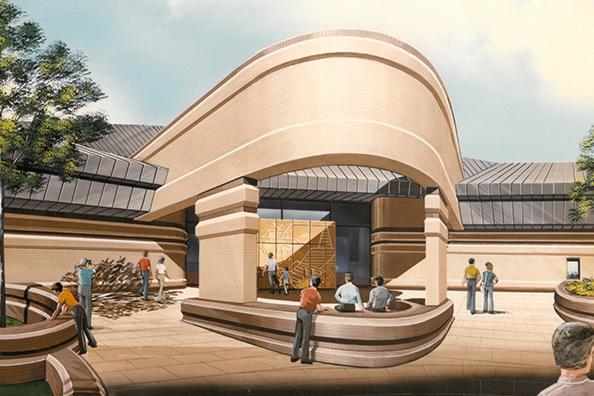
 The Korte Company has built a wide variety of historic landmarks in the St. Louis, Missouri region. In celebration of St. Louis" 250th year as a city, The Korte Company remembers its most historic builds, which includes the construction of the Cahokia Museum and Interpretive Center, one of the St. Louis area’s historic landmarks.
The Korte Company has built a wide variety of historic landmarks in the St. Louis, Missouri region. In celebration of St. Louis" 250th year as a city, The Korte Company remembers its most historic builds, which includes the construction of the Cahokia Museum and Interpretive Center, one of the St. Louis area’s historic landmarks.
Where the Cahokia Mounds sit today, a bustling city once stood at the epicenter of a massive, sprawling civilization—one that spread from modern-day Wisconsin all the way to Florida and many places in-between. Until the 1780s, it was the biggest known settlement in what is now the U.S., when Philadelphia's population surpassed 40,000. The area consists of more than 120 earthen mounds that sit atop a grand area. Historians estimate it took thousands of workers carrying more than 55 million cubic feet of earth in woven baskets to build them. And as far as history is concerned, those workers and everyone in the city all left. The civilization just vanished.
Historical significance
In 1923, the Illinois State Legislature officially protected the Cahokia Mounds site, where 80 of those mounds are still visible. Excavation of the site has revealed that the civilization was the center of trade along the Mississippi River. After historians found many artifacts during digs in the 1950s and "60s, the site was listed on the National Register of Historic Places on Oct. 15, 1955 and was designated a National Historic Landmark on July 19, 1964. In 1982, the United Nations Educational, Scientific and Cultural Organization designated Cahokia Mounds as a World Heritage Site — one of only 22 in all of the modern day U.S. The history and culture is preserved in the Cahokia Museum and Interpretive Center.
Museum construction
In 1989, knowing the historical importance of the site, the Capital Development Board of Illinois commissioned the construction of the Cahokia Museum and Interpretive Center. After design had been completed, The Korte Company was selected as the general contractor to build the museum. The firm built a theater in the museum for the viewing of informational films that describe the civilization. It also constructed a great glass display wall that serves as one of the distinctive features of the museum.
Rendering courtesy of The Korte Company.


 Join our thriving community of 70,000+ superintendents and trade professionals on LinkedIn!
Join our thriving community of 70,000+ superintendents and trade professionals on LinkedIn! Search our job board for your next opportunity, or post an opening within your company.
Search our job board for your next opportunity, or post an opening within your company. Subscribe to our monthly
Construction Superintendent eNewsletter and stay current.
Subscribe to our monthly
Construction Superintendent eNewsletter and stay current.